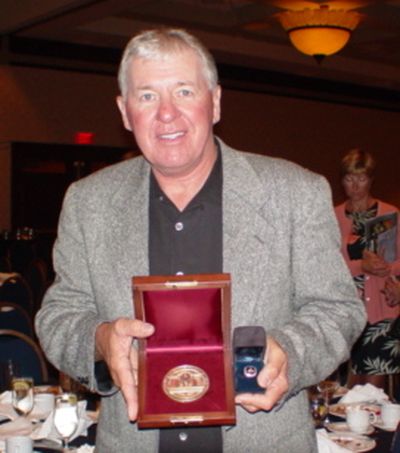Sneva sees positives in IRL’s merger with Champ Car

Tom Sneva has been around Indy car racing long enough to know when things are good they’re very good and when times are tough the days seem to last an eternity.
Indy cars were once popular, but Tony George and financial backers of the Indianapolis 500 started the Indy Racing League, driven to highlight a season’s worth of racing with the focus on its premier event, the 500, as a way to attract high-dollar companies and participants away from Champ Car.
The concept brought fledgling success for George, chaos to the sport overall and ultimately led to last spring’s union of Champ Car and the IRL. Sneva took all of it in and with the first season of the joined series concluding last weekend, the Spokane native, Indy 500 winner and former ABC broadcaster has high hopes for open-wheel racing’s future.
“It was all a positive for the sport,” he said while taking a break from a Burbank, Calif., golfing event. “The big key to their success was the car counts went up at events, which provided more entertainment.”
One impact to the sport from the onset of the unification was lost race dates, including Portland’s longtime Champ Car event. Sneva hopes that a stronger series could return an event to the Northwest.
“It’s possible that it could come back, but this year they had to take two schedules and put one together,” Sneva said. “Now you have plenty of venues that want races and there still could be some (cities) left off next year’s schedule. It has hurt the Northwest not having a date, but hopefully, there will be more races than what they had this year which could lead to a return of Portland.”
Adding race dates means overcoming perceptions of the sport to casual fans, he said.
“Right now, the perception is NASCAR is the big thing in racing. I think that if you get purses up then racers will come, put on an entertaining event and we could see the sport get back to where it was or even find its own place for fan interest.
“NASCAR has learned to provide plenty of flag-to-flag entertainment, but it’s more than that now. I feel the value of entertainment dollars spent for IndyCar is better than NASCAR and for $10 million you’ll get a team sponsorship versus just the panel on a stock car.”
Growth in open-wheel ranks has been fueled by drivers from outside the United States. For IndyCar to gain traction in a fan’s mind, that must change, Sneva said.
“We need to get more drivers involved that come from the United States,” he said. “It’s not like it use to be where the grass roots ranks of midgets and other open-wheel styles allowed a young driver the chance to move up to Indy cars. Now days, the cost of racing makes it harder for kids to move up unless they bring a big sponsor with them.”
To land high-dollar support means race teams must change perceptions within corporate America, according to Sneva.
“All the big sponsors are looking at NASCAR long before they think about IndyCar. After the Indianapolis 500 the series isn’t covered as well, while NASCAR gets tremendous coverage for 35 or 36 weeks. That coverage brings a lot of involvement for sponsors, but I do see NASCAR flattening out because of the amount of money needed to be competitive in that series versus IndyCar. When you have an 18- to 20-race schedule versus the 35 or 36 (NASCAR runs) a company needs to start looking at what the return could be in this new (IndyCar) market.”
Sneva’s future appears bright.
“If I can help a team next year that would be great, and I really enjoyed the broadcasting and tried to be entertaining when I was with ABC,” he said. “I thought at the time I was a little more advanced for them and see now that my style of entertainment on the air is what you find during most race broadcasts today. I would love to go back and do it again, but we’ll just have to see where things go.”